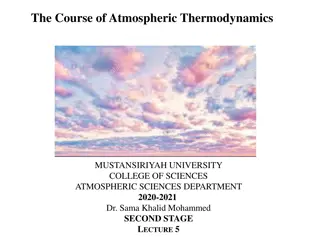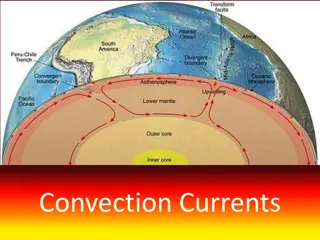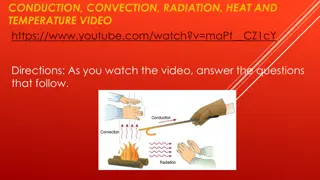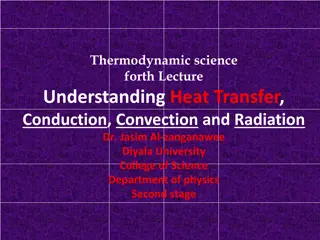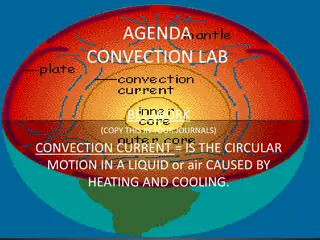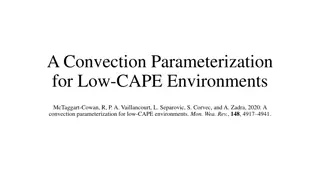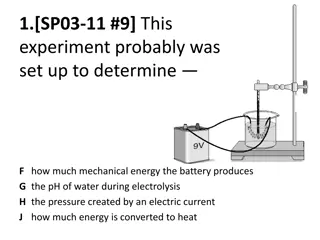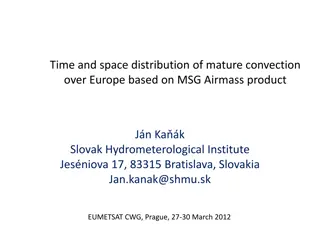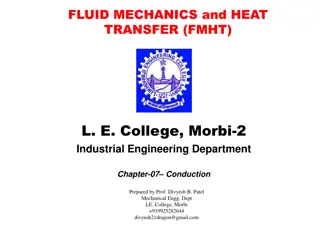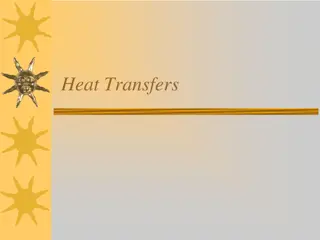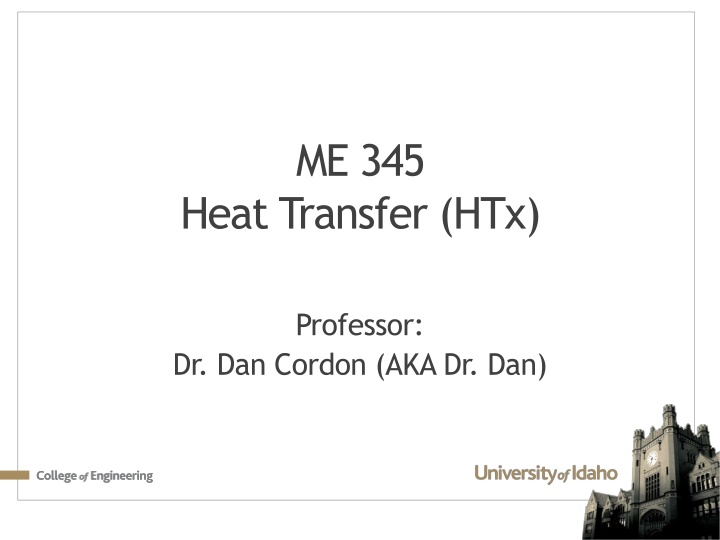
Heat Transfer and Convection in Engineering
Explore the fundamentals of heat transfer and convection in engineering, covering topics such as boundary layer analysis, convection coefficients, and Newton's Law of Cooling. Gain insights into classifying different types of flows and the importance of local vs. average convection coefficients. Discover solutions to convection problems and the significance of fluid property information in determining convection coefficients.
Download Presentation

Please find below an Image/Link to download the presentation.
The content on the website is provided AS IS for your information and personal use only. It may not be sold, licensed, or shared on other websites without obtaining consent from the author. If you encounter any issues during the download, it is possible that the publisher has removed the file from their server.
You are allowed to download the files provided on this website for personal or commercial use, subject to the condition that they are used lawfully. All files are the property of their respective owners.
The content on the website is provided AS IS for your information and personal use only. It may not be sold, licensed, or shared on other websites without obtaining consent from the author.
E N D
Presentation Transcript
ME 345 Heat Transfer (HTx) Professor: Dr. Dan Cordon (AKA Dr. Dan)
CLASSIFYING CONVECTION Type of Flow Impinging External Internal Laminar Developing Turbulent Fully Developed Mix of Both Be Purposeful About: ? local coefficient average coefficient
BOUNDARY LAYER SUMMARY Velocity: BL Thickness: Related to: BL Parameter: ?(?) Surface Friction Friction Coefficient - C? Thermal: BL Thickness: Related to: BL Parameter: ??(?) Convection HTx Convection Coefficient - Concentration: BL Thickness: Related to: BL Parameter: ??(?) Convection Mass Transfer Mass Transfer Convection Coefficient - ?
h - LOCAL VS. AVERAGE Until now we have considered the convection coefficient to be a constant for each of the problems you ve solved The total heat leaving a surface may be found by: Which turns in to: We can define an average convection HTx coefficient as: Which then gives us:
h - LOCAL VS. AVERAGE Our previous analysis wasn t wrong but it was assuming an average convection coefficient. We usually calculate the local convection coefficient as a function of x Then use the above to calculate the average convection coefficient so we can use Newton s Law of Cooling
hm - FOR CONCENTRATION Convection Mass Transfer Coefficient Same analysis for h also works for hm We get the following equations: Where: NA is the rate of molar transfer CA,s and CA, are the molar concentrations
hm MOLAR VS. MASS Species transfer can be expressed as either molar flux, or mass flux Multiply both sides of these two equations by Molecular Weight We get the mass flux or mass rate as: When we do the same with Fick s Law: Then via substitution we can get the convection mass transfer coefficient as:
PROBLEM OF CONVECTION Solving Newton s Law of Cooling is relatively simple. What is difficult is finding the convection coefficient(s). Usually need fluid property information (density, viscosity, thermal conductivity, specific heat, binary diffusion coefficient, etc.) Also need information about the flow (information about boundary layers, surface conditions, etc.) In order to solve these problems we end up making many assumptions, some of which reduce the accuracy of our predictions. That said, mathematical simulation is still very helpful in giving us insight to the problem and system behavior. Let s work through several example problems (one today, more next lecture)
EXAMPLE 6.1 A sketch of the problem and thermal boundary layer looks like:
EXAMPLE 6.1 We can look at the average convection coefficient over the surface area. But since the plate has a constant width, the parameters are just a function of x only. Solving the right equation above (since we know h as a function of x)
EXAMPLE 6.1 Plot the results: Implications: Developing boundary layer (increasing x) causes the local convection coefficient to decrease Developing boundary layer (increasing x) causes the average convection coefficient to decrease For this reason, the average convection coefficient (at any particular value of x) must be larger than the local convection coefficient at the same value of x.
EXAMPLE 6.1 Graphically, if we look at the value at x = 1 [m] Area under hx Same area as a rectangle at x = 1 [m] Implications: For this problem only, For most problems, h will decrease with x, so average convection coefficient will be larger than local Average should ALWAYS match your intuition of: Draw a rectangle of the same width that has the same area


